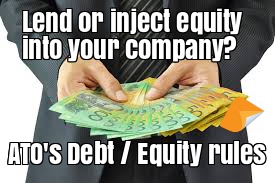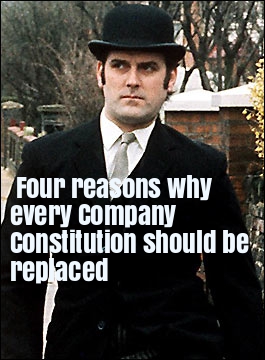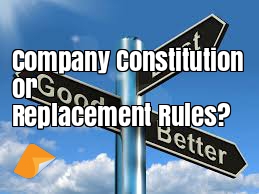I want to run a business. What is the best business structure?
These are the building blocks of a business structure:
- company – in trade in its own right
- company – as trustee of a family trust
- company – as trustee of a unit trust
- family trust – where there is just mum and dad
- unit trust or partnership of family trusts – where there is mum and dad + children or business partners
- partnership – share profit between the partners, lacks asset protection
These 6 ‘building blocks’ are a bit like lego. You put them together in different ways.
This depends on your individual circumstances. Do you have children? Are you married. Do you follow the ‘man of straw and woman of substance’.
Let’s now examine each building block in details:
Company trading in its own right
About 40% of accountants will opt for this. The other 60% opt for a company not trading in its own right. Instead the company is used as a corporate trust. This is the company is given the job of being the trustee of a Family Trust or a Unit Trust.
The shares in the company are usually owned by a Family Trust. Or if there are children or non-family members involved, then the shares are held by a number of Family Trusts.
Example of Mum and Dad operating out of a company
- Dad builds a Family Trust. Dad and Mum are the Appointors.
Let us say you
The downside of this is that a company gets limited access to Capital Gains Tax relief. You end up paying a higher tax than if the assets were held in your own individual name (sole proprietor or partnership), Family Trust or Unit Trust.
Business Structures: Family Trusts
Trusts for Business
Be careful in which “vehicle” you buy or build a business or asset. You can run your business as a sole trader, partnership or through a company via a Family Trust or Unit Trust or a combination of the above.
You may buy a business in your own name. As things go well you may want to share the profits with your spouse to reduce tax. Later you may want to take on partners or gain the benefit of a family, unit and service trust.
Every time there is a change in the ownership the tax man wants his cut.
If you started your business from scratch then your “cost base” could well be nil. If you later sell or transfer the business, to say, a Family Trust then you may pay capital gains tax on 100% of the value of the business.
Family Trusts
Family Trusts provide your advisor with scope in sharing the tax burden between your family members.
This is what a Family Trust looks like:
Trustee = puppet; Appointor = god
For asset protection it may be better to have a company as the Trustee.
The power to appoint and dismiss the trustee is given to the Appointor of the trust. You can also appoint both yourself and your spouse as Appointors.
| Appointor – this person can sack the Trustee | Trustee – this is the figure head, you, your spouse or a company | Settlor – This person “settles” the first $10 on the trust and does no more | ||
| Trust Fund – the original $10 and other assets you put into the trust | ||||
| Beneficiaries – Mum, Dad, children, grandchildren, any company you have an interest in, mother in law and Uncle Harry. The Beneficiaries have no rights to demand anything. | ||||
Avoid CGT? Yes, you can generally change the Appointor (controller) without triggering CGT. For example, mum and dad can make the children the Appointors when they die.
Business Structures: Unit Trusts v Companies
A Unit Trust is similar to a Family Trust but is used for two or more families.
One or two people, usually a husband and wife, control a Family Trust. The husband and wife have complete discretion to whom they distribute income each financial year. Such “trust” is not usually shared outside a family! Hence the need for a Unit Trust.
How does a Unit Trust work?
At the end of each year, income is distributed to the Unit Holders in proportion to the units that beneficiary holds. (Unlike in a Family Trust) the Trustee has no discretion.
Units are often held by Family Trusts, companies or by individuals.
Unless the Unit Trust is correctly drafted unit holders are liable for any shortfall.
Can’t I just use my Family Trust?
A Unit Trust serves a different purpose to a Family Trust. A Unit Trust has:
- negotiability (buy and sell units)
- fixed annual entitlements to income and capital (no discretion)
Transferring units
The ownership of the trust funds is divided into a number of equal units. The units are recorded on a register and are transferable like shares in company.
Well-constructed Unit Trusts include mechanisms for cashing in (redemption) and transferring the units.
Unit Trust versus a company
On the face of it, owning units in a Unit Trust is similar to owning shares in a company. The High Court of Australia has, however, stated that a unit in a Unit Trust is fundamentally different to a share in a company. A shareholder has no interest in the assets of the company. A Unit Holder has a proprietary interest in the trust property: Charles v Federal Commissioner of Taxation (1954) 90 CLR 598. This is a beneficial interest.
Unlike a shareholder, a unit holder can lodge a caveat over Unit Trust land.
Other differences include:
- A trust comes into existence as the result of a private rather than a government There is less governmental interference of trusts.
- A company is a legal entity in A trust is not a separate legal person.
- Shareholders are linked by a contract in the company’s Unit holders are not necessarily in a contractual relationship with each other.
Business Structures: Self-Managed Super Funds
What is Superannuation?
Superannuation is a method of saving and investing money during your working life for your retirement.
A superannuation fund is set up by a trust deed. The deed contains the rules of the fund. It is administered by a trustee. The trustee holds and invests the trust property on behalf of the members.
What are the benefits of a SMSF?
You can set up your own super fund. This is called a Self-Managed Super Fund (SMSF). It gives your advisers greater control.
- Potentially decreased costs because of less But not always.
- New cash flow and tax planning But more complexity.
- Designing your own investment strategy, with your
- The choice of a broader band of investment options.
- Invest in your business premises (eg offices) and lease
- Set up flexible
Who traditionally uses SMSFs?
- Rich people, self-employed and small business owners.
- Retirees who wish to manage their own pension
- People who believe they can achieve better returns than professional
- People that relish
What are the disadvantages?
- Compliance & Auditing: Your SMSF needs annual financial statements and auditing by your
- Investment Strategy: Your SMSF needs a regularly updated complying “Investment Strategy”. Your adviser assists
- Lending money: You can’t lend money to yourself or any
- All members are trustees: Each member must also be the trustee. There are issues when a member gets sick or becomes of unsound
- Borrowing money: The fund can however borrow money from a
- Can’t sell your assets into the fund: apart from listed shares and commercial real estate, the fund can’t purchase any assets you This is irrespective whether the price is fair.
- Trust Funds go out of date: Fund deeds need regular reviews and updating.
What assets can my SMSF own?
Most SMSFs hold shares, cash and property. While a SMSF can own almost anything, the trustees only maintain the fund for the benefit of members for retirement. What the fund invests in is tempered by that rule. This is very much a financial planning & accountant question.
Selling my business
You started your business. You worked up the business. And now you want to sell the business.
You pay tax when you sell a business. But you structure the business to reduce taxes.
Reducing tax when you sell your business:
1. Claim the CGT concessions
The small business CGT concessions is available to all taxpayers. But you must satisfy either a:
- $2 million turnover test; or
- $6 million net asset value test.
Both tests are assessed on a group basis. There are 4 different concessions that constitute the small business CGT concessions. Each has its own eligibility criteria and exotic rules.
Further, the general discount concession reduces eligible capital gains by 50%. But is is available only to resident trusts and resident individuals. Thankfully, it is available for gains made on all types of assets. The concession significantly influences what business structure in which you started the business.
A company does not get the concession. But if you sell the shares in the company, then you pay get the concession. The only problem is that the purchaser is reluctant to buy shares in your company. No one can tell what the company has been up to.
- The best tax outcome is selling the shares in a company. You then get the general discount concession.
- This is in contrast to selling the business in the company. You then do not get the general discount concession. It is lost forever.
Together with the small business CGT concessions, there is great value in selling at the shareholder level. But it is almost impossible to prove that your company is ‘clean’. Even searches at ASIC and encumbrances shed little light on what the company has been up to. Buying shares in a company is adventurous.
Where a purchaser buys the shares in a company, their investment is exposed. This is to the historical risks and liabilities of the company. Therefore, it is safer for the purchaser to buy the assets from the company.
Your company is often contaminated with personal expenditure and private transactions. Further, loans by the company (Div 7A) and loans to the company create complexity.
2. Getting taxed on scrip deals
What if you do not sell for cash? Mergers, roll-ups and many other situations have payment by shares in the purchaser. It may also be a combination of cash and shares.
The shares received are consideration for the sale transaction. The ATO treats the payment of shares like you got cash. It looks at the market value of those shares.
3. Managing the tax on earnout arrangements
Sometimes the purchaser pays you over time. This is based on future earnings or the ability to keep the client base.
This is called an ‘earn out’.








